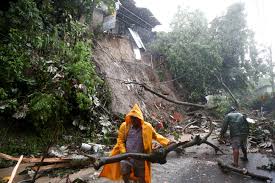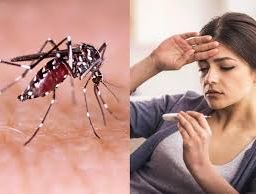
Disaster Cleanup Guide: Restore Home and Surfaces Safely
Embarking on the challenging journey of disaster cleanup requires a strategic and thorough approach to restore normalcy. When a calamity strikes, the aftermath demands meticulous attention, and our comprehensive guide ensures effective disaster cleanup for your home and surfaces. From safety protocols to debris removal, follow these steps to navigate the restoration process seamlessly, ensuring a clean and secure living environment.

When a disaster strikes, it leaves behind a trail of destruction and chaos. Cleaning up and restoring your home and surfaces after such an event can be a daunting task. However, with a systematic approach and a positive mindset, you can tackle the cleanup process effectively.
Ensure Safety Before Disaster Cleanup:
Before you start the cleanup, prioritize your safety and the safety of others. Make sure the area is secure and free from potential hazards. Wear appropriate personal protective equipment (PPE) such as gloves, masks, and sturdy footwear. If there is structural damage, assess the stability of the building before entering.
Assess the Damage:
Take a thorough inventory of the damage caused by the disaster. Identify areas that require immediate attention, such as waterlogged spaces, broken glass, or exposed electrical wires. Document the damage by taking photographs for insurance purposes.

Disaster Cleanup: Removing Debris
Start by removing debris and large objects from your home and outdoor areas. This may include fallen branches, damaged furniture, or other items that cannot be salvaged. Use caution when handling heavy objects, and if necessary, seek assistance from friends, family, or volunteers.
Dry and Ventilate:
If your home has been exposed to water or excessive moisture, it’s crucial to dry out the affected areas promptly. Open windows and doors to promote air circulation and use fans or dehumidifiers to expedite the drying process. Remove wet carpets, furniture, and any other items that cannot be salvaged.

Clean and Disinfect Surfaces:
Thoroughly clean and disinfect all surfaces in your home to remove dirt, debris, and potential contaminants. Use a mild detergent and warm water to scrub walls, floors, countertops, and other hard surfaces. Pay extra attention to areas that were in direct contact with floodwater or other hazardous substances.
Disinfecting Solutions for Disaster Cleanup:
Prepare a disinfecting solution by mixing one part bleach with nine parts water. Ensure proper ventilation and use gloves while handling bleach. Apply the solution to cleaned surfaces using a sponge or cloth, and allow it to air dry. Be cautious when using bleach on delicate surfaces, as it may cause discoloration or damage. Consult manufacturer guidelines or seek professional advice for specific surfaces if needed.
Allow Areas to Air Dry:
After cleaning and disinfecting, it’s important to allow the surfaces and areas to air dry thoroughly. Proper air drying helps eliminate residual moisture, preventing the growth of mold and mildew. Open windows and use fans or dehumidifiers to facilitate the drying process. Avoid covering damp surfaces or using items before they are completely dry.
Soft Surfaces:
For soft surfaces like carpets, rugs, and upholstery, consider steam cleaning or using professional cleaning services to ensure thorough disinfection. Follow manufacturer guidelines and consider replacing severely damaged items that cannot be effectively cleaned.

High-Touch Areas:
Pay special attention to high-touch areas such as doorknobs, light switches, remote controls, and countertops. These areas can harbor bacteria and viruses. Use disinfectant wipes or sprays specifically designed for these surfaces to effectively eliminate germs. Follow the product instructions for application and contact time.
Personal Belongings:
Clean and disinfect personal belongings, such as clothing, bedding, and toys, that have been exposed to the disaster. Launder them using the hottest water recommended on the care labels and dry them thoroughly. For items that cannot be washed, consider professional cleaning services or consult manufacturer guidelines for appropriate cleaning methods.
Air Quality:
Improve indoor air quality by using air purifiers or running fans and open windows to increase ventilation. Replace air filters in HVAC systems, as they may have been compromised during the disaster. Allow fresh air to circulate throughout your home to help eliminate any lingering odors or pollutants.

Mold and Mildew Prevention:
After a disaster involving water damage, preventing mold and mildew growth is crucial. Keep an eye out for any signs of mold or musty odors. If you notice mold growth, consult a professional mold remediation service to safely and effectively remove it. In areas prone to moisture, use dehumidifiers to maintain optimal humidity levels and prevent mold from taking hold.

Personal Safety and Self-Care:
Throughout the cleanup process, prioritize your personal safety and well-being. Take breaks, stay hydrated, and rest when needed. Cleaning up after a disaster can be physically and emotionally exhausting, so make sure to practice self-care. Seek support from friends, family, or community resources if you find yourself overwhelmed.
Seek Professional Help:
For complex cleanup tasks or if you’re unsure about certain aspects of the restoration process, don’t hesitate to seek professional assistance. Cleaning and restoration companies specialize in disaster recovery and have the knowledge, experience, and equipment to handle challenging situations. They can ensure thorough cleaning, disinfection, and restoration, giving you peace of mind.

Cleaning up your home and surfaces after a disaster requires careful attention and thoroughness. By following this step-by-step guide, you can navigate the cleanup process effectively, ensuring the safety and cleanliness of your living space. Remember to prioritize safety, remove debris, dry and ventilate, clean and disinfect surfaces, allow areas to air dry, and take preventive measures against mold and mildew. Seek professional help when needed and practice self-care throughout the process. By restoring your home, you can reclaim a sense of normalcy and create a clean and comfortable environment for you and your loved ones.
Disclaimer: The information provided in this content is for general informational purposes only. It is not intended as medical or healthcare advice, diagnosis, or treatment. Always seek the advice of a qualified healthcare professional with any questions you may have regarding a medical condition or healthcare decisions.
















